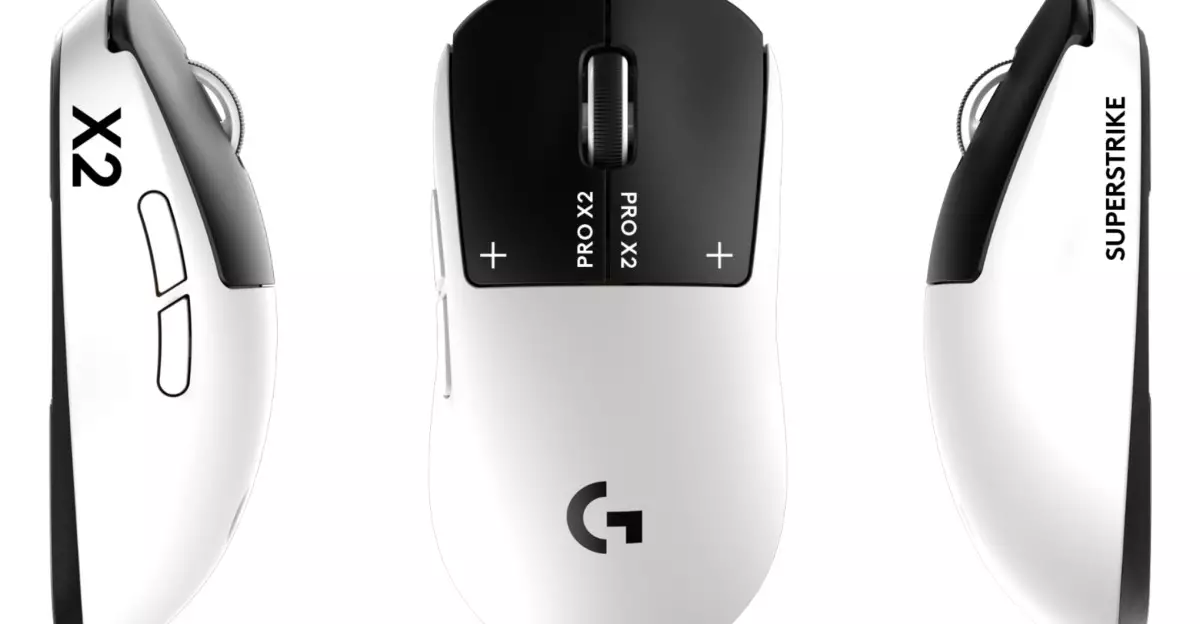The gaming peripheral industry has long been dominated by mechanical switches, prized for their tactile feedback and reliable actuation. However, Logitech’s latest release, the Pro X2 Superstrike, signals a paradigm shift. Instead of traditional mechanical buttons, it introduces an innovative analog sensor system powered by sophisticated haptic feedback. This leap forward promises to redefine how gamers experience responsiveness, speed, and customization, making it clear that Logitech is not merely improving existing technology but fundamentally transforming it.
This new approach is driven by Logitech’s proprietary Haptic Inductive Trigger System (HITS), which substitutes mechanical clicks with an inductive, haptic feedback mechanism. The result is a sleek, lightweight device (weighing just 65 grams) that offers unprecedented control granularity. The mechanical feel is simulated through precise vibrations, which can be fine-tuned, providing an experience that is not only customizable but also potentially more reliable and durable since it eliminates the wear and tear associated with physical switches.
Redefining Speed and Sensitivity in Gaming
The Superstrike’s proprietary technology is centered on enhancing speed and precision. The analog buttons feature only 0.6mm travel, which means players can register clicks faster than ever before—up to 30 milliseconds faster, according to Logitech’s claims. This reduction in latency could offer a crucial edge in competitive gaming, where milliseconds often decide victory or defeat.
Additionally, the mouse supports an extraordinary level of customization with up to ten actuation points—an uncommon feature in gaming mice. Combined with the innovative rapid trigger function, it allows for swift, repeated inputs with minimal effort. This rapid trigger system is not just gimmicky; it’s rooted in mechanics borrowed from advanced gaming keyboards, allowing the sensor to reset with negligible lift, thus enabling rapid-fire responses. Gamers aiming for that split-second advantage will find this feature particularly appealing, especially in fast-paced FPS titles.
What truly makes this device stand out is the ability to configure five distinct rapid trigger reset points within Logitech’s G Hub software. This level of personalization facilitates a tailored experience, making the Superstrike adaptable to various gaming styles or genres. Whether you prefer quick, aggressive button presses or precise, measured inputs, the Superstrike seems to accommodate them all.
Questions of Practicality and Performance
While the technology is undeniably impressive on paper, real-world application remains the ultimate test. The debate about ultra-high polling rates—such as the claimed 8,000Hz—lingers. Most human players lack reaction times that can leverage such high refresh rates effectively. Nonetheless, in combination with the rapid trigger system, these features could create a synergy that yields performance benefits never before possible in a gaming mouse.
That said, my skepticism is grounded in practicality. Hardware enthusiasts often chase numbers that may not translate into perceptible improvements during actual gameplay. For most users, even professional gamers, a 1,000Hz or 2,000Hz polling rate suffices. The real question is whether the haptic analog system and rapid trigger will contribute significantly to gameplay, or if they are simply technological novelties.
Another noteworthy aspect is the price point—at $179.99, the Superstrike is positioned at the premium end of the market. This investment will only be justified if gamers feel the tangible benefits outweigh the cost. For competitive players with a need for every millisecond advantage, the customization and speed features may justify the expense. Casual users, however, might be left questioning whether such advanced technology is worth the premium.
Innovating for Different Hand Sizes and Preferences
Logitech’s initiative to introduce the Superlight 2C, a smaller, slightly lighter version of the original mouse, will likely appeal to gamers with smaller hands or those seeking a more nimble device. Weighing in at just 51 grams, this variant emphasizes mobility and swift maneuvering as priorities.
Availability starting October 21st at $159.99 makes it a compelling option for gamers who appreciate the technological innovations but prefer a more compact form factor. This flexibility indicates Logitech’s understanding that one size does not fit all in the gaming community. By offering both standard and smaller variants, they acknowledge diversity in grip styles and hand ergonomics, which are critical factors in prolonged gaming sessions.
However, the true potential of the Superstrike’s innovations depends on how well the analog haptic feedback performs in practice. If it can provide consistent, tactile cues that mimic physical clicks convincingly, this could usher in a new era of gaming mice where digital and physical sensations blend seamlessly. If not, there’s a risk that gamers might find the experience gimmicky or distracting.
The Logitech Superstrike embodies a bold step forward—an ambitious attempt to marry analog technology with gaming peripherals. Its success will hinge on how convincingly it can deliver tactile feedback and whether gamers perceive real, measurable advantages. If Logitech’s vision materializes convincingly, we might be witnessing the dawn of a new standard for precision, speed, and customization in gaming mice.

